Bodh Gaya is in the state of Bihar in India and is one of the most significant pilgrimage centres for the followers of Buddhism worldwide. It is where Siddhartha Gautama, later known as Buddha, became enlightened under the Bodhi Tree nearly 2,500 years ago. Bodh Gaya has seen its modest house in many monasteries erected by different Buddhist countries and organisations, thus paying homage to the teachings of the Buddha on the world platform. Explore the most important Bodh Gaya Monastery, each with unique designs and historical importance that will add richness to your spiritual and cultural experience.
9 Bodh Gaya Monastery
Bodh Gaya is a beautiful place to visit and spend time with your family and close ones. Here are the 9 Bodh Gaya Monastery listed for your next visit.
1. Mahabodhi Temple Monastery
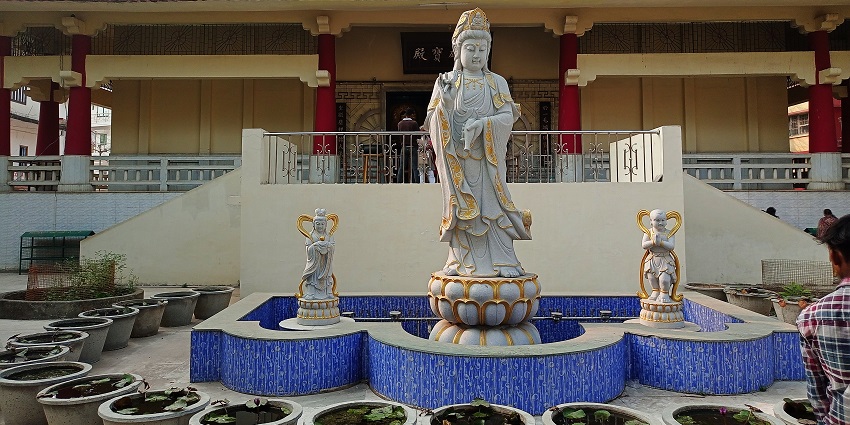
Photo: Admantine123 / Wikimedia Commons / Image For Representation Only
The Mahabodhi Temple is the spiritual heart of Bihar. It is designated as a UNESCO World Heritage Site and marks the location of the Buddha’s achievement of enlightenment. It is not a monastery, but it is a ceremonial temple and is the primary ceremonial space for monks and devotees. The monastery property adjoining the main temple supports the practice of monks who reside and meditate on the grounds. If you plan to visit this biggest monastery in Bodh Gaya, you will observe rituals, prayer offerings, and its peaceful and devoted nature.
Best Time To Visit: October to March (cooler weather for comfortable exploration)
Photography: Allowed, but not inside the main temple where you meditate
Timings: 5 AM – 9 PM
Suggested Read: Haunted Places In Bihar To Explore The Eerie Rush
2. Tibetan Karma Temple And Monastery
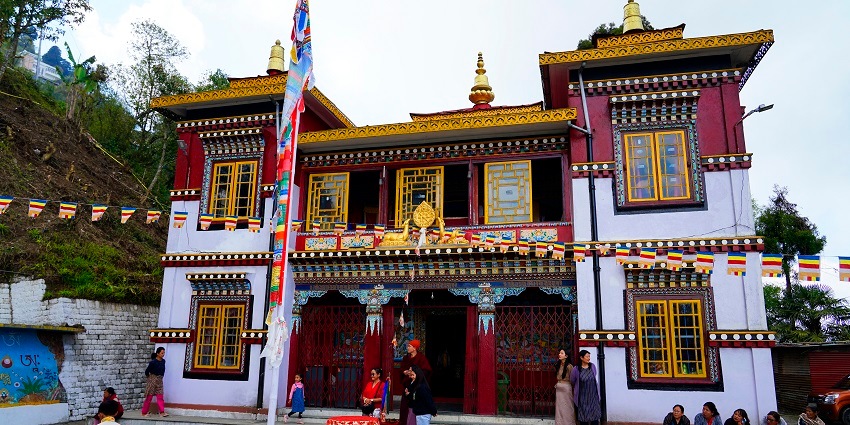
Photo: Amitabha Gupta / Wikimedia Commons
The Tibetan Karma Temple represents the Tibetan style of Buddhism next to the Mahabodhi Temple. There are prayer wheels, murals, and large statues of Buddha inside. The monastery is a ceremonial temple for Tibetan Buddhist practice and ceremony. You will have a great opportunity to observe Tibetan monks meditating and praying, giving you a sense of this style and branch of Buddhism. The monastery will equally serve as a place of contemplation, with prayer flags flying in the breeze, and an inviting environment to meditate inside.
Best Time To Visit: November to February
Photography: Allowed in the outside areas and the main hall
Timings: 7 AM – 6 PM
3. Thai Monastery
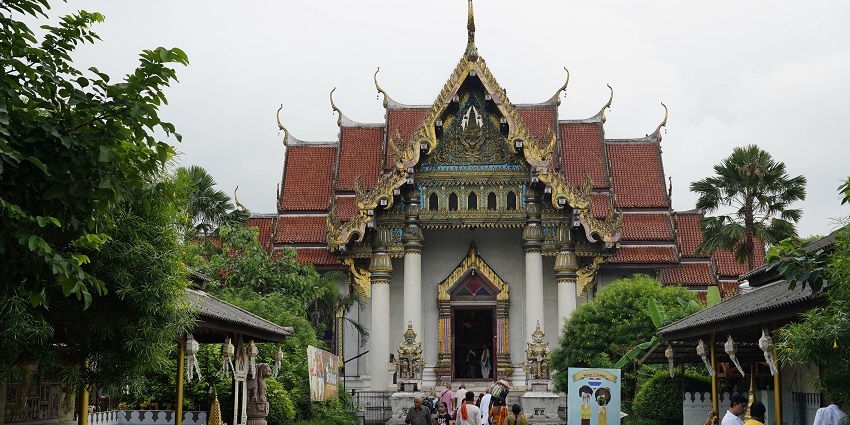
Photo: Amitabha Gupta / Wikimedia Commons / Image For Representation Only
The Thai Monastery in Bodh Gaya was built by the government of Thailand in 1957 to represent the style of Thai architecture and culture, characterised by its curved, golden roof and architecture. There is a large golden statue of the Buddha in the main temple. In addition to the main temple building, you will want to sit in the serene surroundings of this monastery, with gardens and the sounds of peaceful monks chanting in unison echoing through the buildings and grounds.
Best Time To Visit: October to March
Photography: Allowed outside the temple
Timings: 9 AM – 6 PM
Suggested Read: Shopping Places In Ranchi
4. Bhutanese Monastery
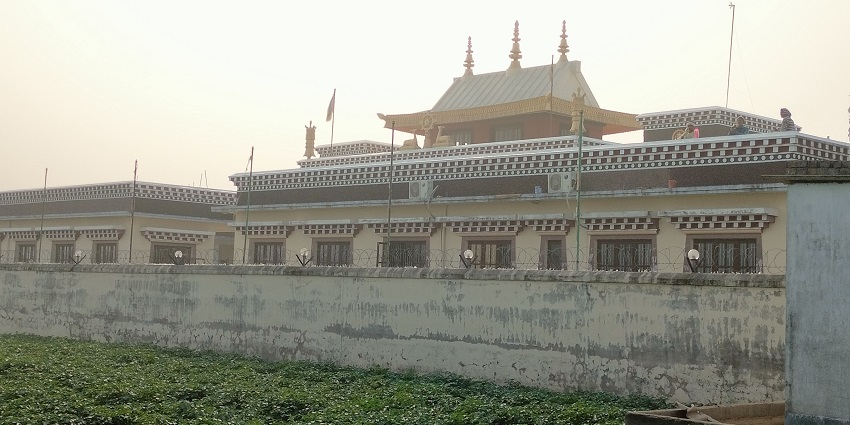
Photo: Odantapuribs / Wikimedia Commons
The Bhutanese Monastery, with its exquisite craftsmanship, stunning murals, and traditional architecture, is distinctive. The King of Bhutan built this for Bhutanese monks and pilgrims who visit Bodh Gaya to study and as a site for meditation. It is a serene place, and the colour and richness of representations of scenes from Buddha’s life and teachings, which provide a physical representation of his teachings, add to the peacefulness of this site. The monastery is also a place of tranquillity where you can meditate and reflect in the quiet gardens available around the monastery.
Best Time To Visit: October to February
Photography: Allowed in the exterior areas and inside the temple
Timings: 7 AM – 5 PM
5. Japanese Nipponzan Myohoji Monastery
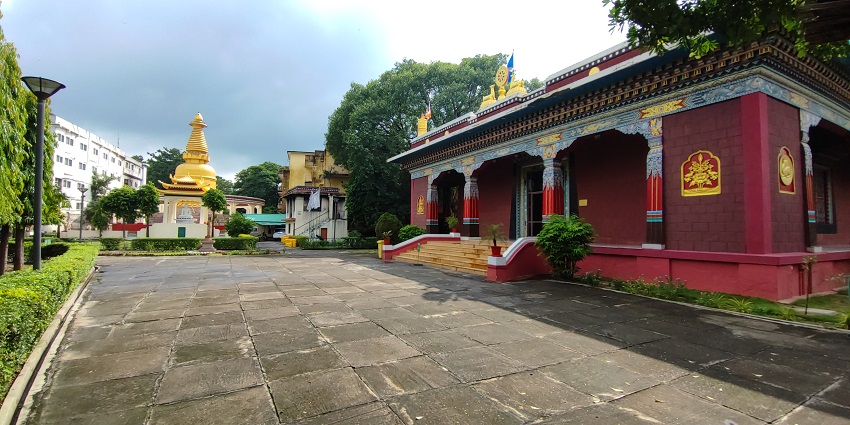
Photo: Sumitsurai / Wikimedia Commons
The Nipponzan Myohoji Monastery, a popular monastery in Bodh Gaya, serves as a simple yet profound symbol of peace and non-violence. You will find the normal representation of Buddha, simply sitting and meditating inside. The most astonishing quality of this monastery is the peaceful atmosphere, and you will have the opportunity to participate in daily chanting with the monks. The design of the chanting practice at the Japanese Nipponzan Myohoji is based on reciting the Daimoku, or “Nam Myoho Renge Kyo,” which is a central practice of Nichiren Buddhism.
Best Time To Visit: October to March
Photography: Allowed, but not during prayer sessions
Timings: 7 AM – 6 PM
Suggested Read: Chhapaak Water Park Patna
6. Burmese Vihara Monastery

Photo: Mr.Peerapong Prasutr / Wikimedia Commons / Image For Representation Only
Established by Burmese Buddhists, the Burmese Vihara Monastery is a wonderful representation of Burmese architecture. As with all monasteries, the peaceful gardens and simple structures provide an environment for calm. As a place of accommodation for Tibetan monks and certain pilgrims, you will feel welcomed and safely served again, meeting Burmese monks in the rooms. During your visit, you will appreciate the sense of community and devotion expressed towards one another and learn about their practice of Buddhism. Monks will explain customs in sessions of speech and dialogue.
Best Time To Visit: November to February
Photography: Allowed in public areas. Ask for permission to capture photos inside
Timings: 6 AM – 6 PM
7. Royal Bhutan Monastery
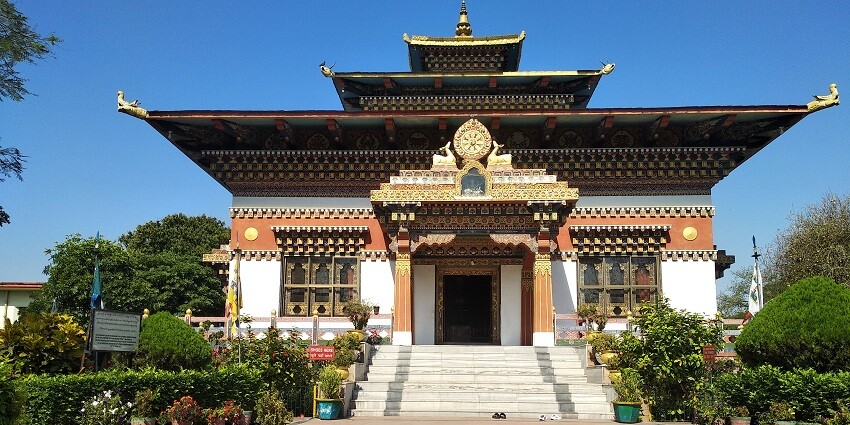
Photo: Rohit Sharma / Wikimedia Commons
The Royal Bhutan Monastery, constructed under the auspices of the King of Bhutan, serves as a tranquil locus that presents the opportunity to access the deep spirituality of Bhutanese Buddhism. The structure is adorned with the customary art and architecture of Bhutanese culture, featuring a large statue of Buddha along with several smaller shrines. You will appreciate the feeling that the space emanates along with the visual beauty, as it is designed to support engagement in inner peace and meditation.
Best Time To Visit: October to February
Photography: Allowed outside. Inside the monastery, permission is required, especially during praying hours
Timings: 6 AM – 6 PM
Suggested Read: Archaeological Museum Bodhgaya
8. Chinese Monastery
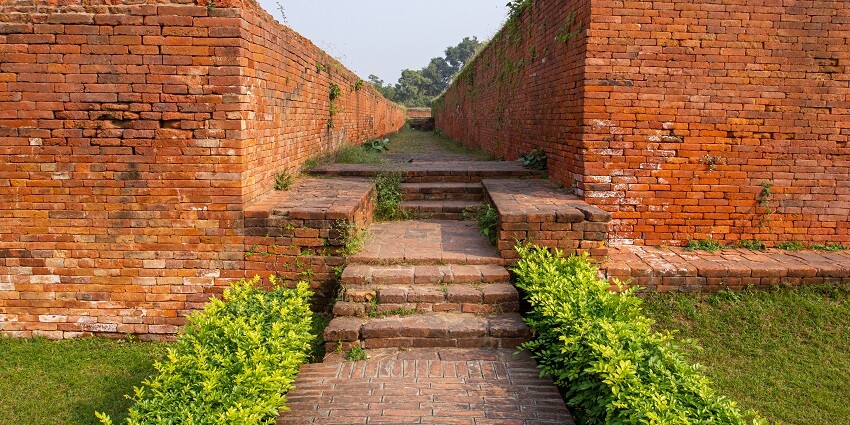
Photo: Uphogaphy / Wikimedia Commons / Image For Representation Only
The Chinese Monastery in Bodh Gaya exhibits the architectural styles of Chinese temples complete with a large sleeping Buddha in meditation. The interior paintings of the temple portray murals that depict elements of the life of the Buddha. While the Chinese Monastery serves a purpose as a place for worship, it serves many functions for cultural learning as there may be many Chinese monks and pilgrims around studying and practising meditation. For you, the experience at the monastery allows consciousness to learn about the Chinese Buddhist tradition as you may participate in rituals and recognitions that are Chinese and uniquely different.
Best Time To Visit: October to March
Photography: Allowed, but not during prayers
Timings: 7 AM – 6 PM
9. Vietnamese Monastery
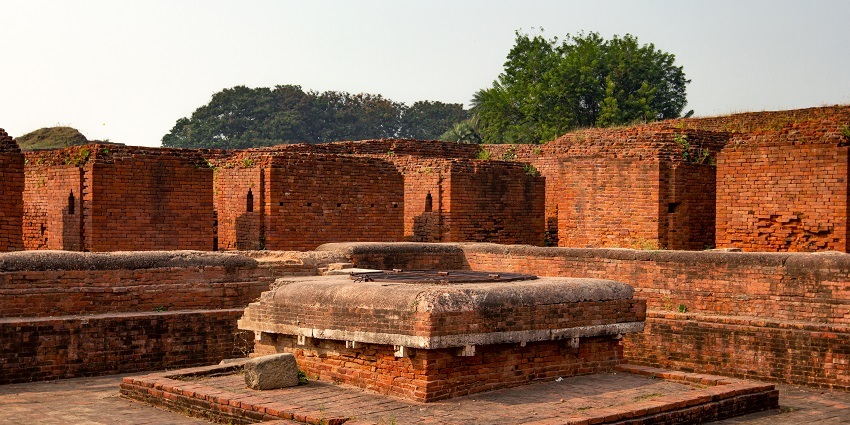
Photo: Uphogaphy / Wikimedia Commons / Image For Representation Only
The Vietnamese Monastery in Bodh Gaya is relatively new but has quickly integrated into the spiritual landscape where the temple carries the architectural style of the Vietnamese Monastery with a large statue of Buddha as its foundation. The monks will offer you greetings and perhaps even draw you into meditation or mindfulness teaching. The Vietnamese Monastery includes a garden where one may sit and meditate quietly. If you want to connect with the Vietnamese tradition of Buddhism, this may be a delightful option.
Best Time To Visit: November to March
Photography: Allowed, but not during meditation or prayer sessions
Timings: 6 AM – 6 PM
Suggested Read: Dive Into Fun At The Funtasia Water Park In Patna
Bodh Gaya is not only of historical and religious importance, it is a vibrant embodiment of the global and international appeal of Buddhism. Regardless of your call for spiritual growth, immersion in a cultural reading, or simply a place of peaceful retreat, Bodh Gaya’s monasteries present a meaningful journey into the essence of Buddhist spirituality. So, plan a trip to Bihar with TripXL and immerse yourself in spirituality.
Cover Photo: Diego Delso / Wikimedia Commons / Image For Representation Only


 WhatsApp
WhatsApp
 Twitter
Twitter









